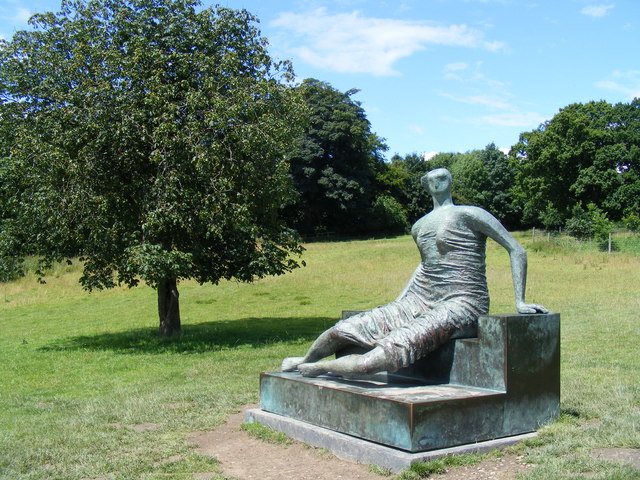Should Wikipedia Have 3D Models of Sculptures?
 I was wandering round The Henry Moore Foundation last Friday - thanks to the delightful wedding of my good friends Mike and Nikki.
I was wandering round The Henry Moore Foundation last Friday - thanks to the delightful wedding of my good friends Mike and Nikki.
Looking at the abstract statues and carvings, I was struck not only by their beauty, but by how easy they would be to reproduce with a 3D printer. Ok - ok! I'm a little obsessed since building a RepRapPro for work - but hear me out.
Wikipedia has been collecting high-resolution scans of famous works of art - although not without controversy - and providing them for free to the public. For example, you can download a 90MB image of the Mona Lisa at 7,479px * 11,146px, detailed enough for just about any purpose.
The controversy with Wikipedia and the National Portrait Gallery was of volunteers downloading ultra-high resolution scans which had been created by the museum and were not originally intended to be set free.
Now we have a situation where many museums are actively laser scanning their artefacts - the Smithsonian have a great 3D collection. It's very easy to grab the Smithsonian's 3D scan of the Willendorf Venus; just check the source code of that page. Some time later, the 3D file can be converted to an STL and shared freely for anyone to view and download.
And, if galleries aren't scanning their own sculptures, what happens when Wikipedia volunteers start taking 3D photos of famous works of art? It wouldn't be the hardest thing in the world to sneak a Kinnect and laptop into a gallery and surreptitiously create a 3D mesh. Or, even, just take lots of photos at different angles and use software to determine the dimensions.
And that's exactly some enterprising chap has done. With nothing more than an iPhone and used the 123D Catch software, it takes less than five minutes to make a 3D model of Moore's "Old Flo".
That 3D file could easily be embedded into Wikipedia in much the same way that high-resolution photographs are today. This would allow visitors to experience an object in 3D in their browser. See, for example, how GitHub manages this.

With an ancient sculpture, I think that's acceptable. The 3D scan is a series of facts about an object. It's a slavish copy of a work of antiquity - no more deserving of copyright than a photocopy of a Shakespeare folio.
But what about Henry Moore? Most of his art was created in the second half of the 20th century, and he died in 1986. In most parts of the world, his copyright persists for at least another 20 years.
I'd love to see interactive 3D models of his work embedded in Wikipedia - but is it legal or moral for people to create such items?
I'm not a copyright expert. I feel uncomfortable that the 3D scan of "Old Flo" has been unilaterally released by the scanner as Creative Commons - Attribution - Share Alike. The scan is undoubtedly its own work - but just as taking a photo of a portrait doesn't necessarily create a new and copyrightable piece of work, I'm not sure that a straight scan of a sculpture somehow releases the object from the bonds of copyright.
Today, we are exactly where we were with MP3s in 1998. Converting art to .stl files is a niche sport for dedicated fans, it requires expensive hardware to reproduce the original art, and the quality isn't that great.
15 years later and our laws have barely caught up with the fact that people can reproduce movies and music in nano-seconds.
How will our copyright laws react when high quality models of sculptures are freely shared on underground art exchanges?

 Où est L'Inconnue de la Seine en 3D?
Où est L'Inconnue de la Seine en 3D?
jim says:
Mark L says:
Terence Eden says:
Mark L says:
@Edent You might find this project interesting/inspiring - https://www.zeuxisvr.com/properties
Dr Hupe and the team scan renaissance art and spaces to further their study, presenting them in VR such that you can walk around them or fly up to ceilings to get a closer view.
Virtual Environments | Zeuxis VR@Edent
It took a few years but....,
Go ahead and click on the 3D rendering in this article:
https://en.wikipedia.org/wiki/Lion_of_Al-l%C4%81t
You can touch and drag interactively!
(Works on mobile too, though you'll have to click "Desktop" in the footer to see it on mobile.)
More in this category and it's parent categories:
https://commons.wikimedia.org/w/index.php?title=Category:STL_files_of_sculptures&mobileaction=toggle_view_desktop
#mediawiki
mediawikiLion of Al-lāt - Wikipedia